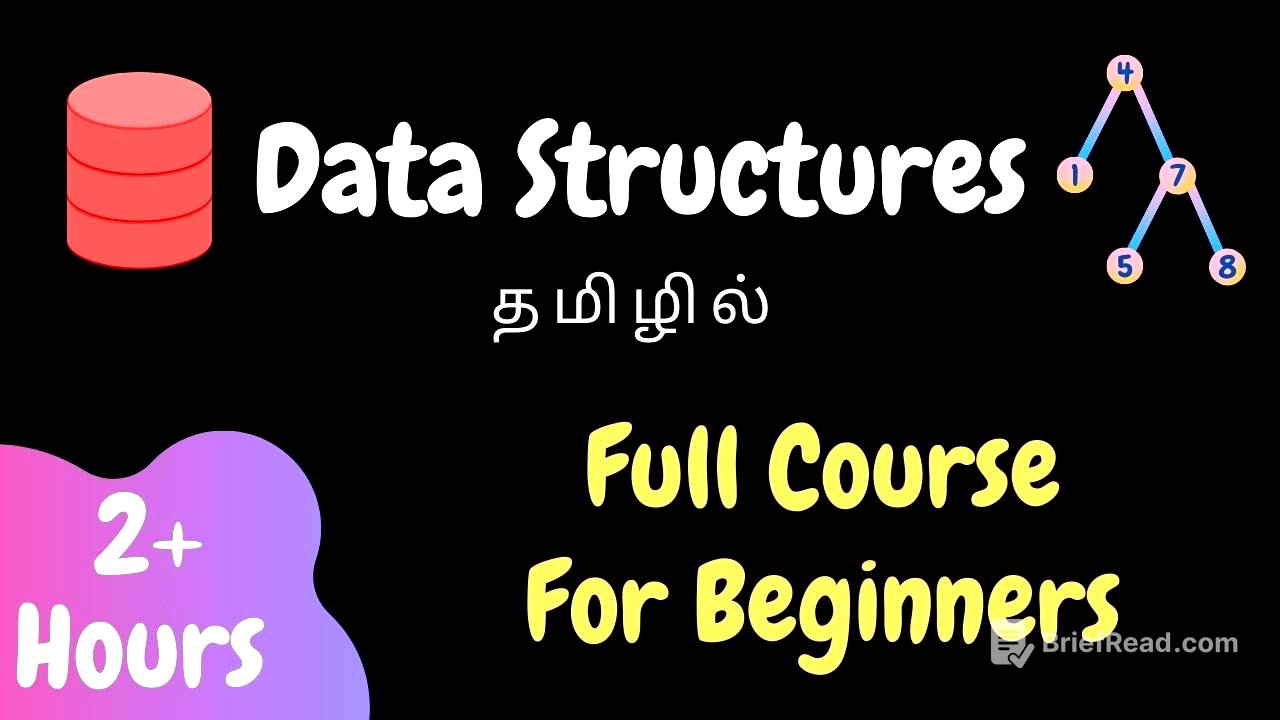TLDR;
This video provides an overview of data structures, explaining what they are, why they are important, and how they are used in computer science. It covers various data structures like arrays, stacks, queues, linked lists, doubly linked lists, dictionaries/hash tables, trees, tries, heaps, and graphs, along with an explanation of Big O notation for analyzing algorithm efficiency.
- Data structures are ways to organize and store data efficiently.
- Big O notation is used to measure the time and space complexity of algorithms.
- Different data structures have different strengths and weaknesses, making them suitable for different tasks.
Introduction [0:00]
The video introduces the concept of data structures in computer science. It sets the stage for understanding how data is organized and managed within computer systems to facilitate efficient operations.
What are Data Structures? [3:06]
Data structures are defined as methods for organizing and storing data in a computer so that it can be used efficiently. The video explains the importance of choosing the right data structure to optimize performance based on specific application requirements.
Big O Notation [7:11]
Big O notation is introduced as a way to express the upper bound of an algorithm's time complexity, describing how the execution time or space requirements grow as the input size increases. It helps in comparing the efficiency of different algorithms.
Arrays [19:52]
Arrays are explained as a basic data structure that stores a collection of elements of the same data type in contiguous memory locations. The video likely discusses the advantages of arrays, such as fast access to elements using their index, and disadvantages like fixed size.
Stack [38:47]
Stacks are introduced as a data structure following the Last In, First Out (LIFO) principle. The video likely covers common stack operations like push (adding an element), pop (removing the top element), and peek (viewing the top element) and their applications.
Queue [51:43]
Queues are explained as data structures that operate on a First In, First Out (FIFO) principle. The video likely discusses enqueue (adding an element to the rear), dequeue (removing an element from the front), and their use cases.
Linked List [1:03:10]
Linked lists are presented as a data structure where elements are stored in nodes, and each node contains a data field and a reference (or link) to the next node in the sequence. The video likely discusses the advantages of linked lists, such as dynamic size and ease of insertion/deletion, compared to arrays.
Doubly Linked List [1:20:30]
Doubly linked lists are introduced as an extension of linked lists where each node contains a data field and two references: one to the next node and one to the previous node. This structure allows traversal in both directions, which can be useful in certain applications.
Dictionaries / Hash Table [1:34:07]
Dictionaries, also known as hash tables, are explained as data structures that store key-value pairs, allowing for efficient retrieval of values based on their associated keys. The video likely discusses how hash functions are used to map keys to indices in an array, and how collisions are handled.
Trees [1:53:01]
Trees are introduced as hierarchical data structures consisting of nodes connected by edges. The video likely covers different types of trees, such as binary trees, binary search trees, and their applications in searching, sorting, and representing hierarchical relationships.
Trie [2:03:39]
Tries (also known as prefix trees) are explained as tree-like data structures used for storing and searching strings. Each node in a trie represents a character, and paths from the root to the leaves represent words. Tries are efficient for prefix-based searches and auto-completion.
Heap [2:13:20]
Heaps are introduced as specialized tree-based data structures that satisfy the heap property: in a min-heap, the value of each node is greater than or equal to the value of its parent, while in a max-heap, the value of each node is less than or equal to the value of its parent. Heaps are commonly used to implement priority queues and for heap sort.
Graph [2:28:05]
Graphs are explained as data structures consisting of nodes (vertices) and connections between nodes (edges). The video likely covers different types of graphs, such as directed and undirected graphs, and their applications in representing networks, relationships, and dependencies.








